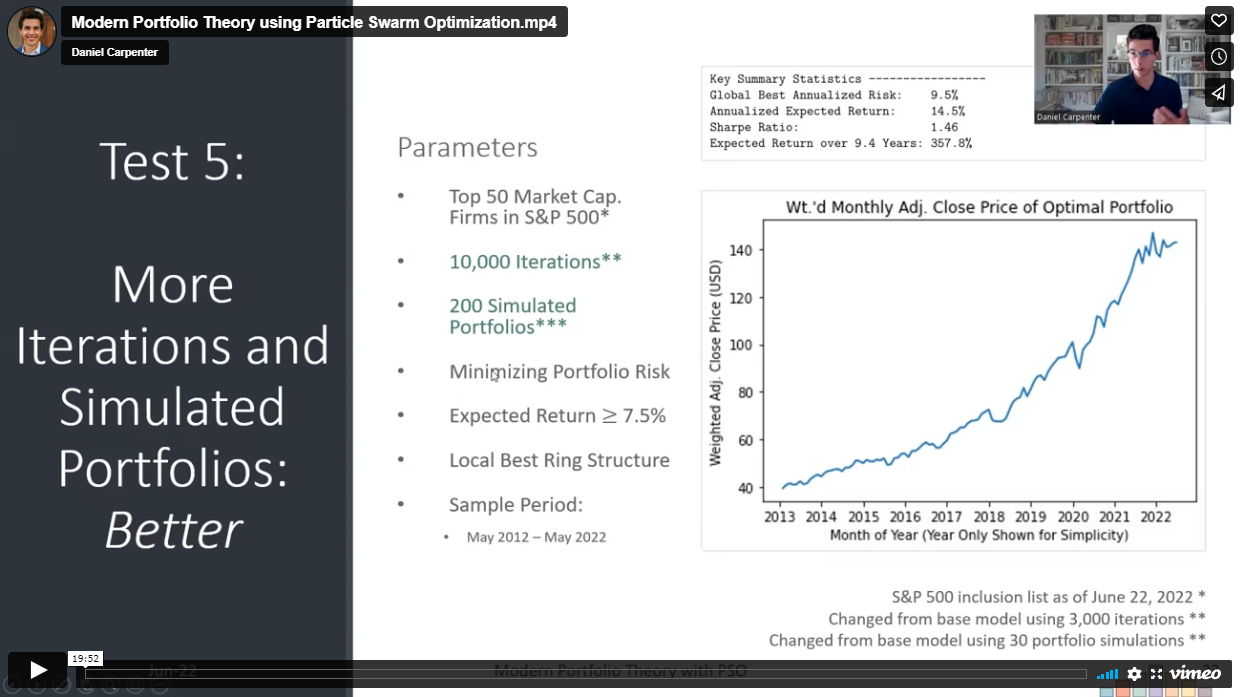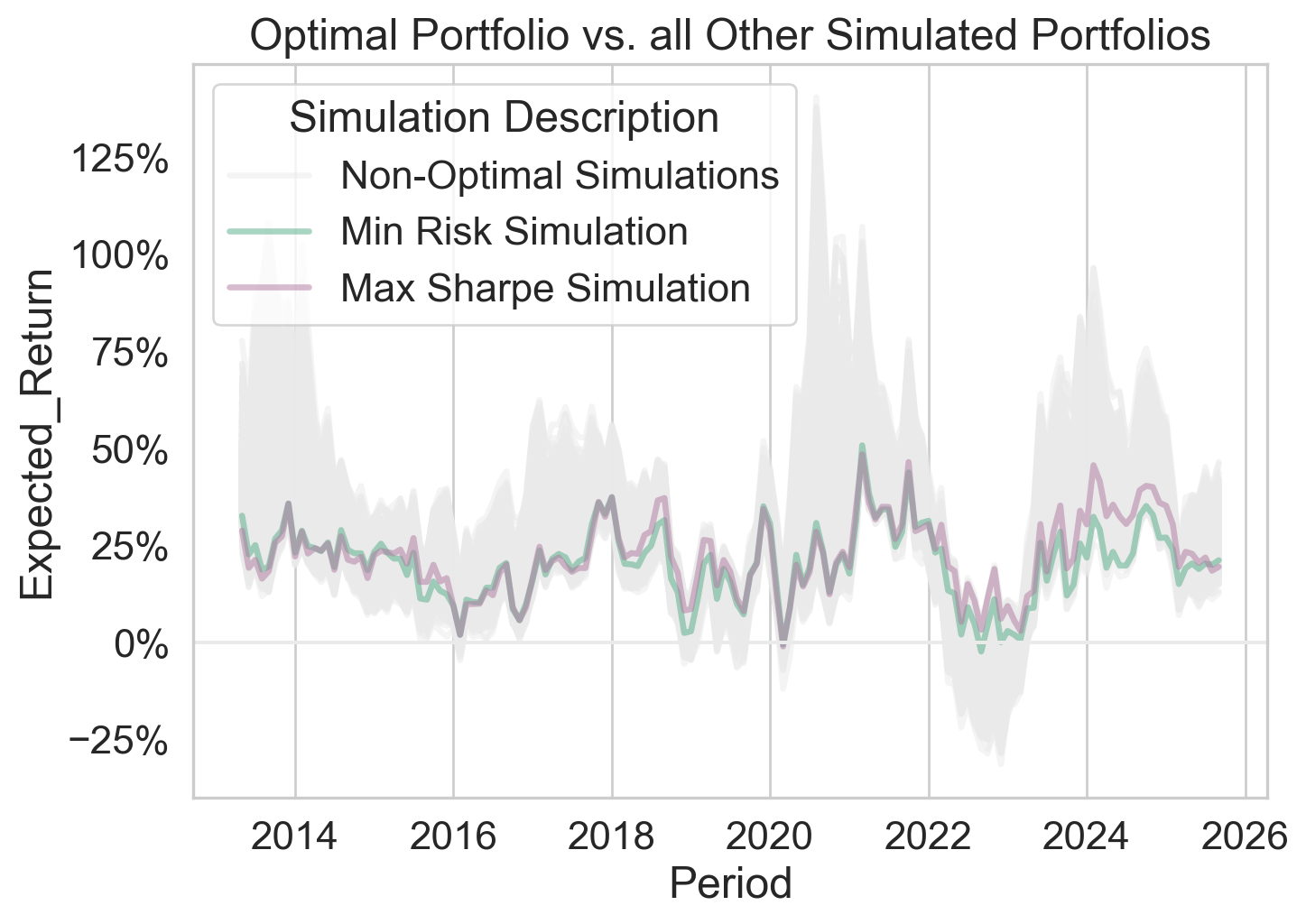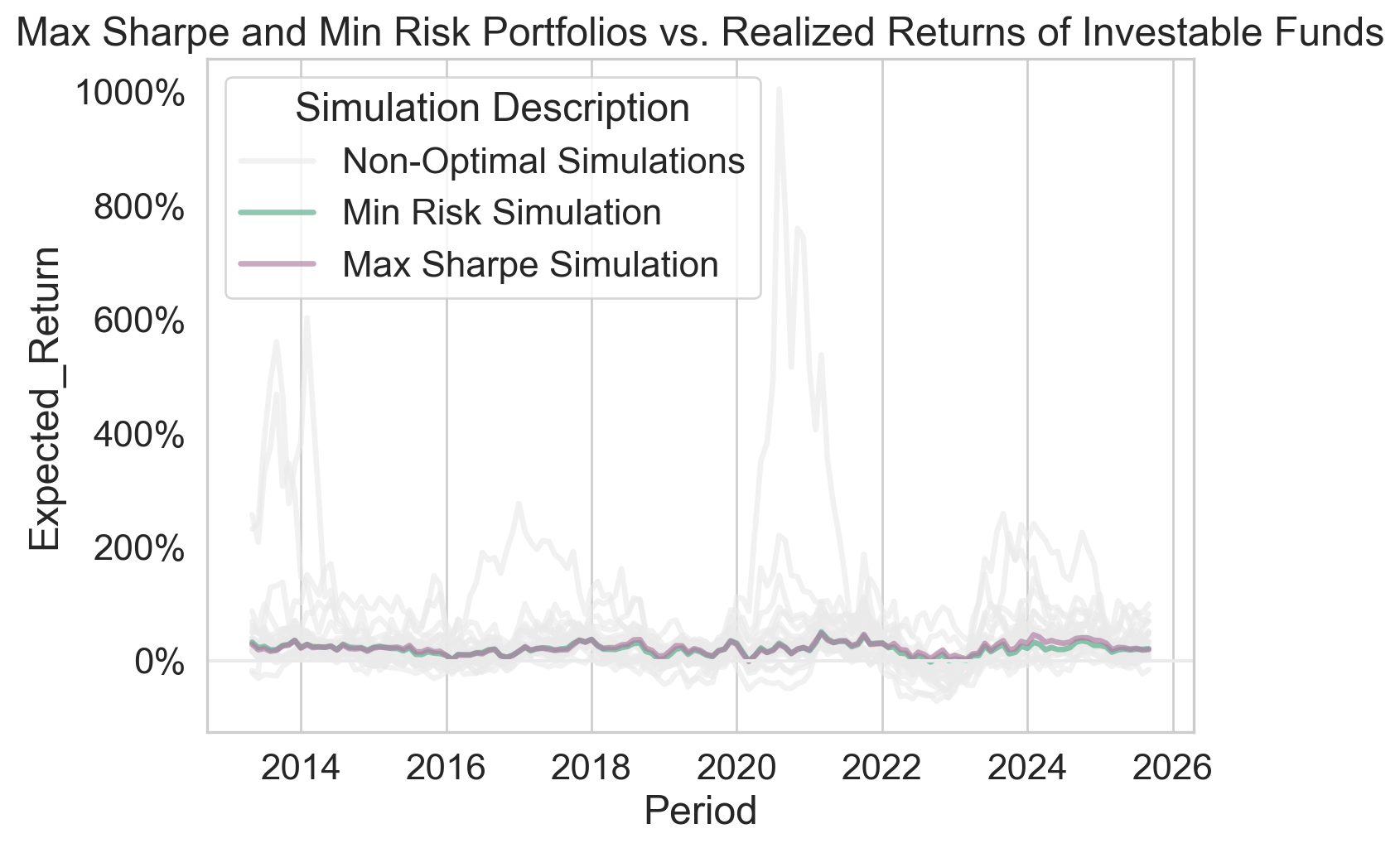View Code Here
# Set working directory to the R project directory
import sys
import os
sys.path.append(os.getcwd() + "//docs//02-Optimization//01-PSO-Portfolio//")
# Import custom classes
import datetime as dt # For dates
import StockFinanceMPT as mpt # Stock pull from yfinance in current wrkdir
import SimulateOptimalPortfolios as sop # Run simulations of global best portfolios
import ViewSimulatedPortfolios as vsp # Wrapper class to plot, export, etc., simulations


